Famous Religious Paintings – Top World-Famous Biblical Paintings
Religion and art are significant aspects of human existence that have mingled for centuries. Some of the greatest painting masters in art history have included religious themes in their artistic repertoire as an important rite of passage and contributed to the appreciation and recognition of art by all those who identified with Christian and Catholic beliefs. This article will outline the top 10 most famous Christian paintings of all time.
Religion in Art: Important Biblical Narratives
The most famous religious paintings from Western art history are often based on a variety of biblical narratives, including imagery of the Virgin Mary, the creation of the Earth, Adam and Eve, hell, and all events leading up to the death of Jesus Christ.
Other important narratives inspired by the Bible include heroic stories and acts of bravery by various characters.
The inclusion of religious subject matter in painting served to evoke a sense of spirituality in viewers through the use of identifiable moral narratives. The Renaissance was an important period in the rise of religious art in Europe, which also birthed many of the famous religious paintings we see today.
Top 10 Famous Religious Paintings From the Renaissance
Popular Renaissance masters such as Leonardo da Vinci and Michelangelo are among the many artists who included religious iconography in their artworks. Below, we will examine the top 10 most famous religious paintings of all time.
Virgin of the Rocks (1483 – 1486) by Leonardo da Vinci
| Artist | Leonardo di ser Piero da Vinci (1452 – 1519) |
| Date | 1483 – 1486 |
| Medium | Oil on panel |
| Dimensions (cm) | 199 x 122 |
| Where It Is Housed | The Louvre Museum, Paris, France |
This famous Christian painting, Virgin of the Rocks, is also referred to as Madonna of the Rocks and was created between 1483 and 1486 by the Italian polymath Leonardo da Vinci. Virgin of the Rocks is one of two paintings with the same theme and composition that portrays the Virgin Mary with her child Jesus Christ alongside the infant John the Baptist and Uriel, one of the major archangels.
The painting is set in a rocky scene, as mentioned in the title, and is a clear demonstration of Da Vinci’s skill in the painting technique called sfumato, which is employed to soften the transition between different colors.

This version of Madonna on the Rocks is housed at the Louvre Museum in Paris, while the other painting is at the National Gallery in London. Many art historians consider this version to be the earliest since its first record was dated back to 1625 as found in the records from the French royal collection.
It has been hypothesized that the painting was sold off by Da Vinci and that the other version of the painting in the National Gallery was created in fulfillment of a 1483 commission for Milan.

The main subject of the painting is the adoration of the child Jesus Christ by John the Baptist, which refers to an event that occurred outside the biblical trope. According to the Gospel of Matthew, Joseph (Mary’s husband) received a warning in a dream that King Herod would try to assassinate Jesus, therefore, Joseph fled with his family to a safer location, Egypt.
John the Baptist was Jesus’ cousin, who also lived in Bethlehem, which was the site of the Massacre of the Innocents.
The Massacre of the Innocents was recorded in the book of Matthew as an order by King Herod to slaughter all male infants in the region. The scriptures state that John was guided by Uriel to Egypt, where, on the way, he met the holy family.
The Last Supper (1495 – 1498) by Leonardo da Vinci
| Artist | Leonardo di ser Piero da Vinci (1452 – 1519) |
| Date | 1495 – 1498 |
| Medium | Tempera on gesso, pitch, and mastic |
| Dimensions (cm) | 460 x 880 |
| Where It Is Housed | Santa Maria delle Grazie, Milan, Italy |
The most iconic religious painting, The Last Supper, was created by Leonardo da Vinci between 1495 and 1498. The painting portrays the biblical scene of Jesus Christ’s last supper before his arrest and crucifixion. The Last Supper was viewed as incredibly important since it marked the evening when Christ announced that one of his disciples would betray him, followed by the establishment of the Holy Communion.
The painting was created using mediums that would allow for the painting to be altered and edited if need be. However, this was to the detriment of the painting’s longevity, as it had to undergo many restoration projects to renew the original image.

The imagery was previously incredibly detailed since it depicted each of the apostles’ reactions to Jesus’ announcement. Judas Iscariot, the apostle who betrayed Christ, is seen holding a small bag, which is presumed to hold the money that he was compensated for betraying Christ.
This popular religious painting also features in many popular culture parodies, including “Quo Vadis” (1951), “The X-Files” (2000), and “The Simpsons” (2005).
The Creation of Adam (c. 1508 – 1512) by Michelangelo
| Artist | Michelangelo di Lodovico Buonarroti Simoni (1475 – 1564) |
| Date | c. 1508 – 1512 |
| Medium | Fresco |
| Dimensions (cm) | 280 x 570 |
| Where It Is Housed | Sistine Chapel, Vatican City |
Painted between 1508 and 1512, this highly recognizable image of The Creation of Adam is also one of the most reproduced biblical paintings in art history. Michelangelo Buonarroti was one of the best Italian painters of the High Renaissance, associated with many iconic artworks inspired by religious subject matter. The Creation of Adam portrays the biblical narrative found in Genesis, which describes the creation of the first man, Adam. God is depicted as a white-bearded man covered in a swirling cloak, which contrasts Adam, who is portrayed completely nude.
The shape behind the image of God was also an anatomically correct image of the human brain, which is one of the best-hidden features of the painting.
The most recognized image from this painting is the point at which God’s hand appears to reach out to Adam’s hand and is a display of God granting Adam life. The garment wrapped around God resembles the shape of a uterus. The green scarf is said to resemble the shape of an umbilical cord, thus, the painting as a whole becomes the birth of Adam.
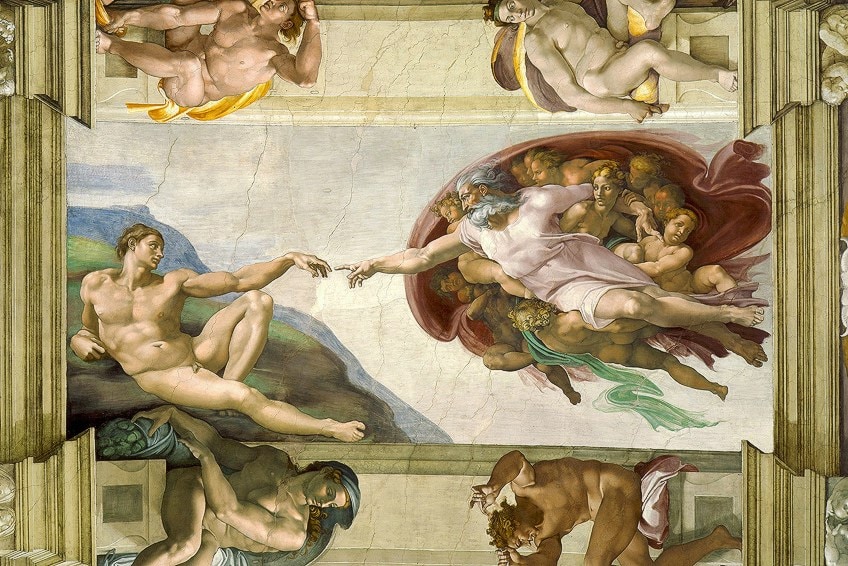
Disputation of the Holy Sacrament (1509 – 1510) by Raphael
| Artist | Raffaello Sanzio da Urbino (1483 – 1520) |
| Date | 1509 – 1510 |
| Medium | Fresco |
| Dimensions (cm) | 500 x 770 |
| Where It Is Housed | Raphael Rooms, Apostolic Palace, Vatican City |
Raphael Sanzio da Urbino was a leading Italian painter of the 16th century whose work received much adoration for its portrayal of the neo-Platonic belief in human grandeur. Raphael achieved this essence of human grandeur through the depiction of religious scenery, as seen in Disputation of the Holy Sacrament.
The massive fresco was commissioned as a decorative piece for the Apostolic Palace in Vatican City, which was once the private library for the congregation of the supreme papal tribunal.
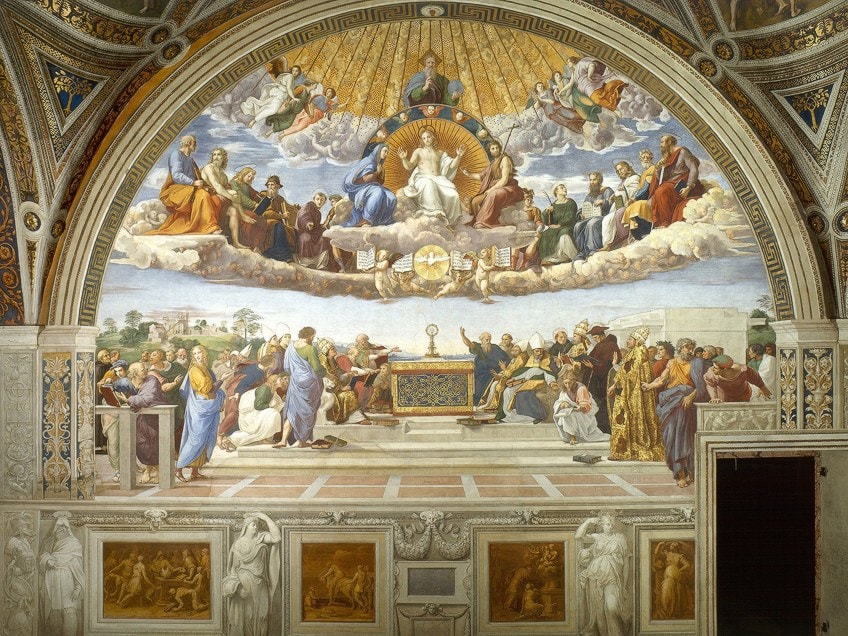
In the fresco, Raphael portrays a scene of heaven and earth, which was common to most large-scale frescoes at the time. Christ is seen encircled by an aureole, which was a luminous cloud or aura that often accompanied such important religious figures. Jesus is accompanied by Mary and John the Baptist in a Deësis position, which was a popular arrangement of Byzantine art for the representation of Christ, Mary, and John.
Other biblical chracters seen in the fresco include Peter, Adam, King David, John the evangelist, James the elder, Paul, and Moses.
The painting also shows God seated above all the figures and is encapsulated in a reverent golden light. He is also surrounded by angels and is seen holding the Earth in his left hand. The holy spirit is represented by a dove, which is found at Christ’s feet. Disputa, as the painting is also commonly referred to, also served as a representation of Christianity’s triumph over philosophy, made evident in Raphael’s fresco on the opposite wall, The School of Athens (c. 1511).
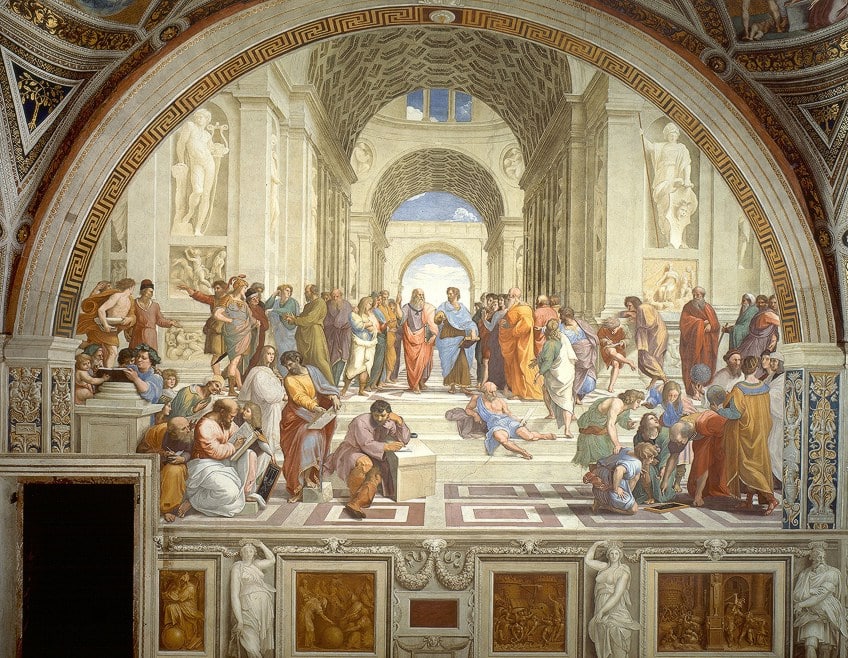
Sistine Madonna (1512 – 1513) by Raphael
| Artist | Raffaello Sanzio da Urbino (1483 – 1520) |
| Date | 1512 – 1513 |
| Medium | Oil on canvas |
| Dimensions (cm) | 201 x 269.5 |
| Where It Is Housed | Old Masters Picture Gallery, Dresden State Art Museums, Dresden, Germany |
The Sistine Madonna is one of the most famous Christian paintings and religious portraits of the 16th century, created by Raphael, who was responsible for many of the best paintings of the Italian High Renaissance. The painting was commissioned in 1512 by Pope Julius II in light of the announcement that the Italian town of Piacenza had joined the papal states.
The painting portrays a vision witnessed by the saints in the clouds.
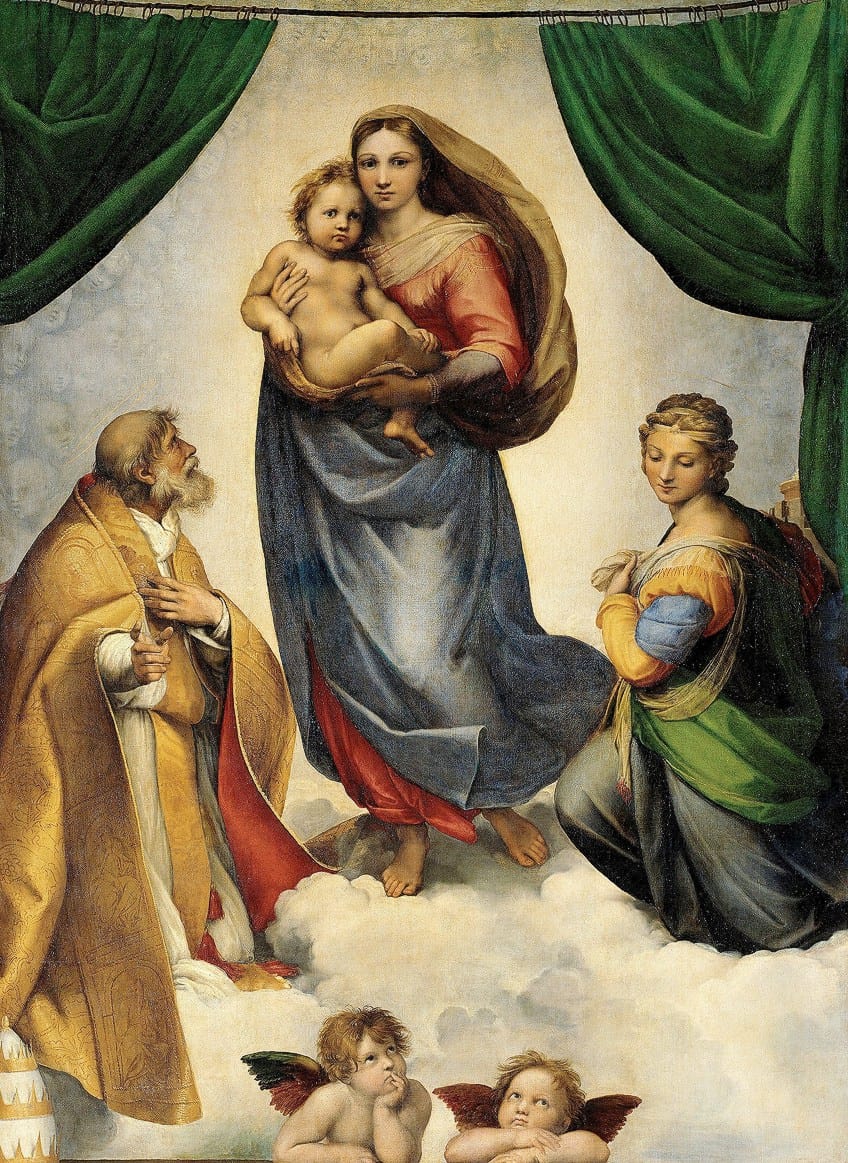
The central subject is the Virgin, seen walking towards the earthly realm as she cradles the baby Jesus in her arms. She is encircled by numerous angels as seen by the multiple heads in the background of the blue sky. Pope Sixtus II can be seen on the left of the image guiding the Virgin towards her earthly destination. The figure on the right is St Barbara, who was a martyr of the third century. Both saints were revered figures at the high altar of the church of San Sisto and were a common feature in many Christian artworks at the time.
The two cherubs at the bottom of the painting served as final touches that were added by Rapahel toward the end of the painting process in order to enhance the composition.
The Last Judgement (1536 – 1541) by Michelangelo
| Artist | Michelangelo di Lodovico Buonarroti Simoni (1475 – 1564) |
| Date | 1541 |
| Medium | Fresco |
| Dimensions (m) | 13.7 x 12 |
| Where It Is Housed | Sistine Chapel, Vatican City |
Michelangelo Buonarroti was one of the most influential Renaissance artists in art history whose legacy continues to inspire many to follow in his footsteps. Aside from being one of the greatest sculptors, Michelangelo was also incredibly skilled at creating biblical paintings and was commissioned by Pope Clement VII to paint one of the world’s most famous religious paintings, The Last Judgement, in the Sistine Chapel.
The fresco depicts the second coming of Jesus Christ and the final judgment of humanity by God.
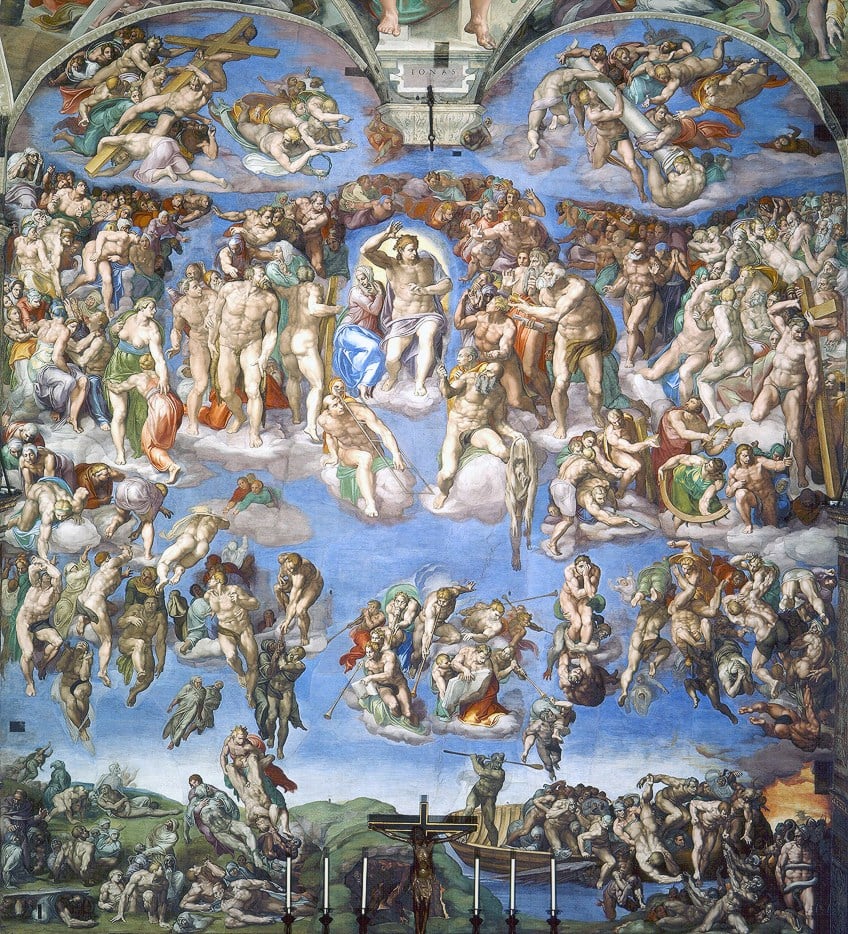
Michelangelo, Public domain, via Wikimedia Commons
The central figure portrays Jesus surrounded by multiple saints with the bottom half of the painting illustrating the resurrection of the dead and the descent of the damned souls into hell. Despite this being one of the most iconic and celebrated examples of religious painting that many artists consider important, it was also the site of great controversy.
Michelangelo was accused of combining Pagan mythology with Christian narratives and thus demonstrated his pursuit of art over a description of the narrative, which at the time, was construed as controversial.
The theme of the painting, which is the Last Judgment, was also popular in Christian artwork and was often featured in large frescoes in churches. The purpose of including artwork with such a serious theme as the last judgment served as a reminder to Christians of the consequences that awaited them if they ever abandoned the church.
Other famous artists of the Renaissance such as Hieronymus Bosch and Hans Memling took on the theme of the final judgment with slightly varied approaches.
The Conversion of Saint Paul (1600) by Caravaggio
| Artist | Michelangelo Merisi da Caravaggio (1571 – 1610) |
| Date | 1600 |
| Medium | Oil on canvas |
| Dimensions (cm) | 237 x 189 |
| Where It Is Housed | Odescalchi Balbi Collection, Rome |
This famous Catholic painting was painted in 1600 by the Italian painter Michelangelo Merisi da Caravaggio. The Conversion of Saint Paul refers to the turning point in the apostle Paul’s life when he stopped executing early Christians and converted into a follower of Jesus Christ instead.
This work is one of two biblical paintings created by Caravaggio on the same theme, being the Conversion of Saint Paul.
According to the painting’s provenance, it was commissioned by Monsignor Tiberio Cerasi in September 1600. Cerasi was the treasurer general to Pope Clement VIII and ended up rejecting the first commissioned drafts. These early versions are believed to have been taken by Cardinal Giacomo Sannessio, however, most scholars seem convinced that this version of The Conversion of Saint Paul is the original.
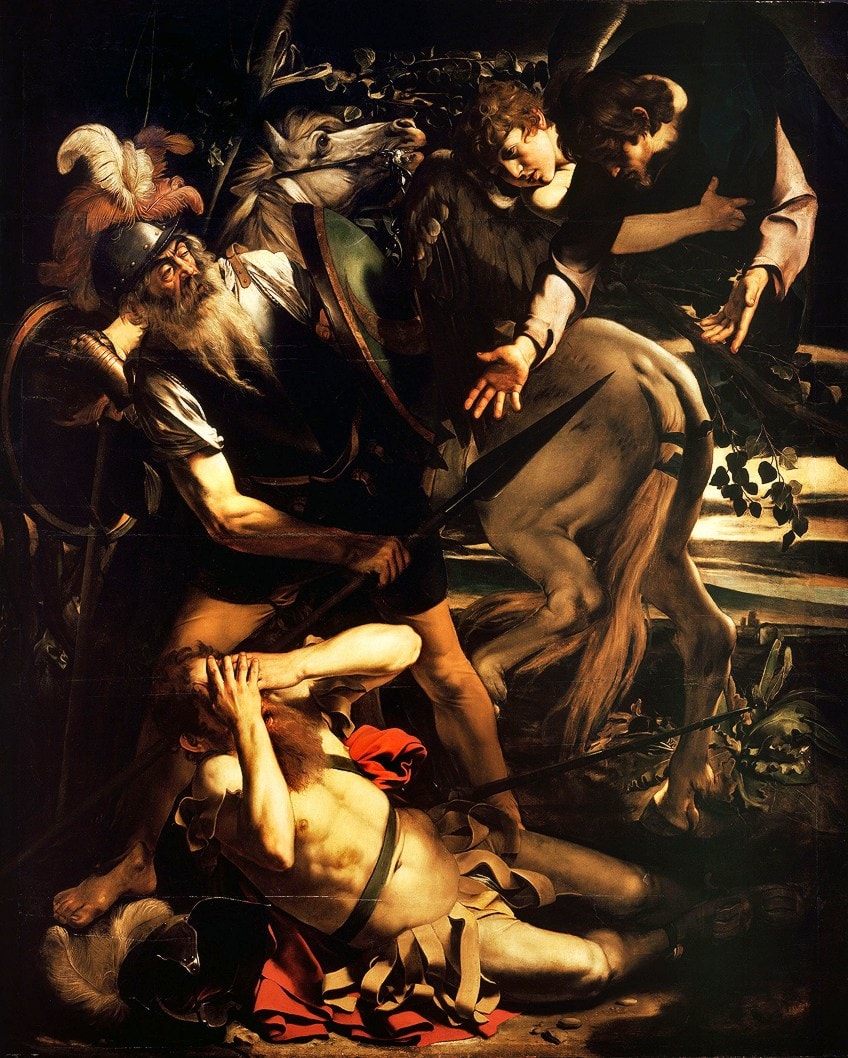
Caravaggio, Public domain, via Wikimedia Commons
The scene in the painting illustrates the biblical account of Saul of Tarsus who embarked on a journey to destroy the Christian community of Damascus. According to the legend, Saul was struck blind by a “brilliant light” as he heard the voice of Christ questioning him on his evil deeds.
Helen Langdon, Caravaggio’s biographer, described the painting style as a combination of the style of Raphael with a sense of “clumsy rustic Realism”.
Caravaggio was responsible for many Baroque masterpieces of the 16th century while cementing his place in art history as one of the most controversial artists of this period. Other noteworthy religious artworks by Caravaggio include The Calling of St. Matthew (1599 – 1600) and The Beheading of Saint John the Baptist (1608).

The Coronation of the Virgin (1641 – 1644) by Diego Velázquez
| Artist | Diego Rodríguez de Silva y Velázquez (1599 – 1660) |
| Date | 1641 – 1644 |
| Medium | Oil on canvas |
| Dimensions (cm) | 176 x 124 |
| Where It Is Housed | Museo Nacional del Prado, Madrid, Spain |
The Coronation of the Virgin is one of the rare religious paintings attributed to the portraiture master Diego Velázquez. The painting illustrates the Virgin Mary with a modest expression and lowered eyes in the middle of being crowned by God and Jesus Christ. The base of the painting shows multiple cherubs while the figures above form a perfect triangular representation of the Holy Trinity.
Velázquez utilized carmine shades of red instead of the traditional shades of red to make the painting stand out.
The inverted triangle formed between Mary, Christ, and God draws attention to the heart space, which is seen mirrored by Mary pointing towards her heart. Altogether, the painting demonstrates a strong sense of equilibrium and harmony, which is an ideal quality for a religious portrait of the Virgin.
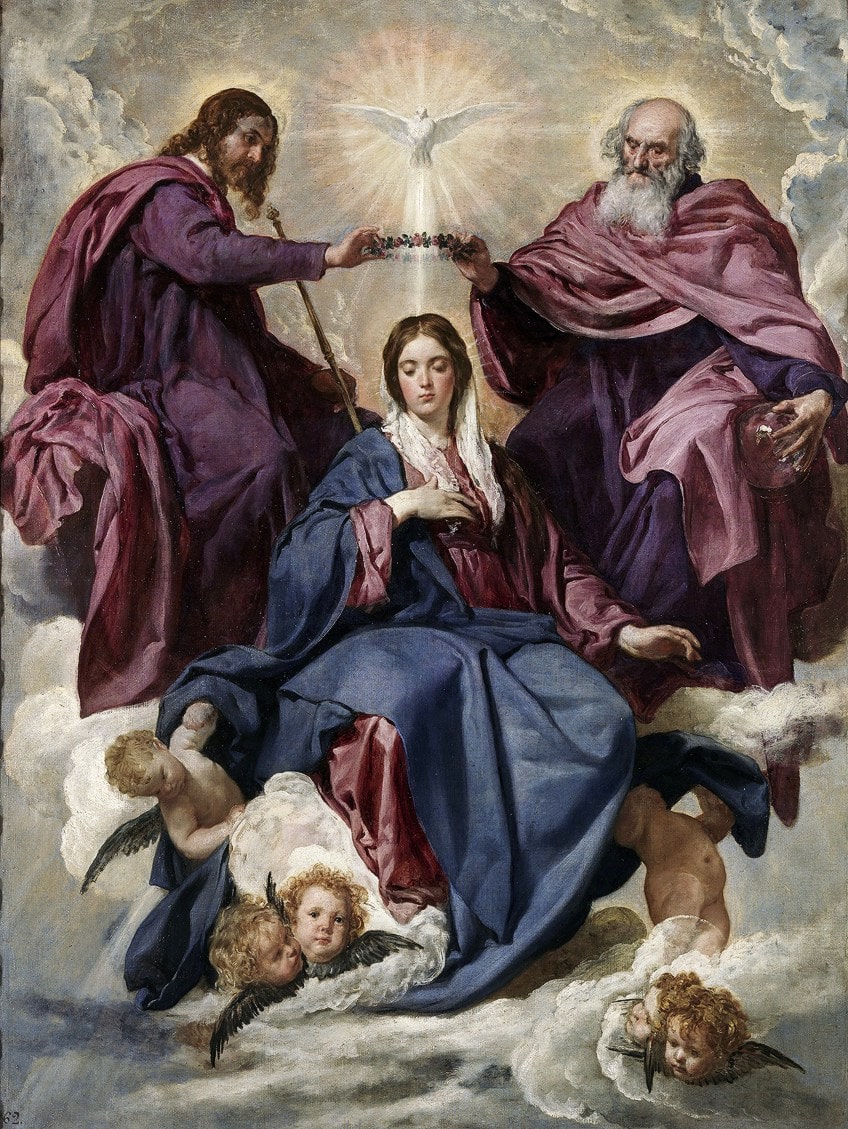
Return of the Prodigal Son (1663 – 1669) by Rembrandt
| Artist | Rembrandt Harmenszoon van Rijn (1606 – 1669) |
| Date | 1663 – 1669 |
| Medium | Oil on canvas |
| Dimensions (cm) | 205 x 262 |
| Where It Is Housed | The State Hermitage Museum, St Petersburg, Russia |
The Return of the Prodigal Son is one of the most famous parables in Christian theology. The parable follows the story of a son who asks his father for his share of the inheritance. After leaving his father’s house, the son squanders his wealth and eventually returns after facing poverty and sickness. In the end, the father forgives his son and the parable becomes a lesson on forgiveness and a reflection of the biblical lesson that God forgives everyone who repents.
Return of the Prodigal Son was created by none other than the famous Dutch master of painting, Rembrandt van Rijn who approached the parable as “we should be glad: for this son was dead and is alive again; was lost, and is found.” Rembrandt captures the scene of the son returning home and facing his father while stationed on his knees in an act of seeking forgiveness.
The Baroque nature of the painting adds to the dramatic effect through the use of high contrasts with shadow and light, which draws attention to the touching father-son moment.
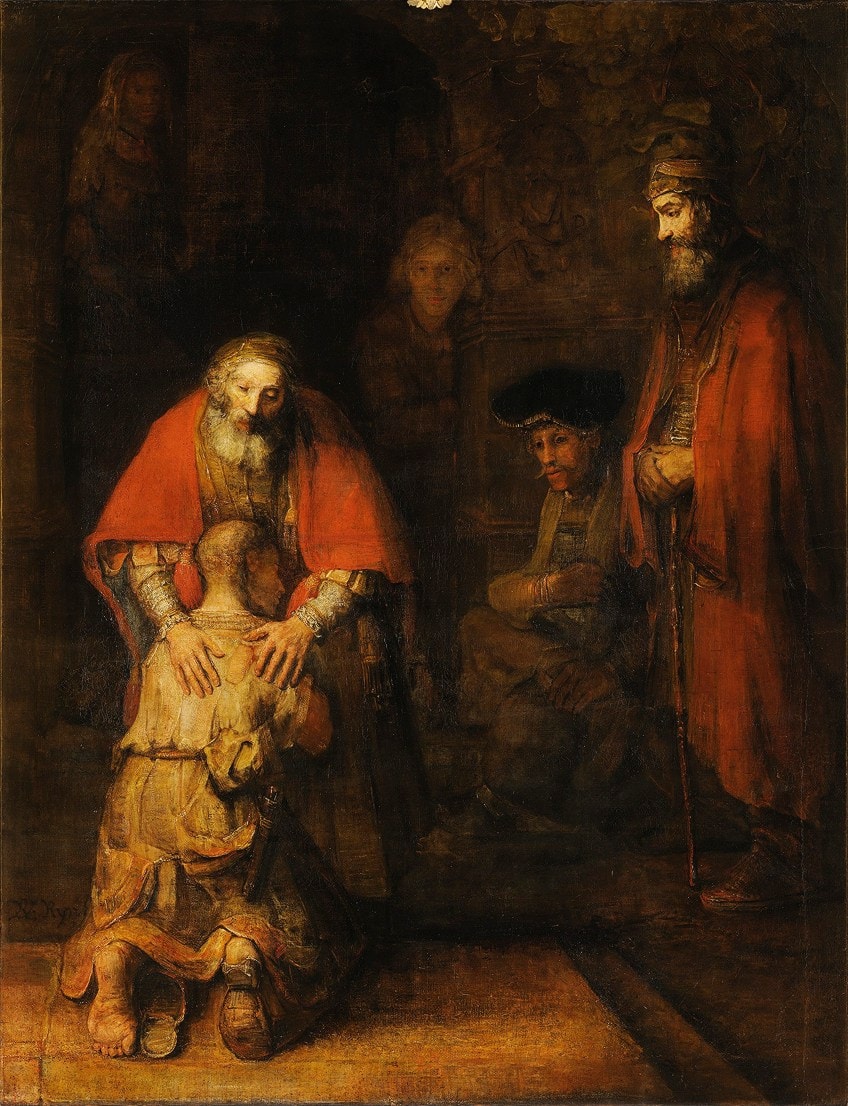
The Immaculate Conception of Los Venerables (c. 1678) by Bartolomé Esteban Murillo
| Artist | Bartolomé Esteban Murillo (1617 – 1682) |
| Date | c. 1678 |
| Medium | Oil on canvas |
| Dimensions (cm) | 274 x 190 |
| Where It Is Housed | Museo del Prado, Madrid, Spain |
The Virgin Mary is perhaps the most frequently represented biblical character in many Catholic paintings and religious portraits. The Immaculate Conception of Los Venerables shows the Virgin Mary adorned in a white robe with the illumination of the sun behind her head and the moon at her feet. Mary is surrounded by numerous rosy-cheeked cherubs as she crosses her hands over her chest with a blue mantle.
This famous religious painting was created by Spanish Baroque artist Bartolomé Esteban Murillo, who was commissioned by Justino de Neve to paint the Virgin Mary.

The Catholic belief in the immaculate conception was popular in Spain throughout the 16th century and remained at the forefront of Spanish dogma under the Catholic Church. The conception of the Virgin Mary received formal recognition in 1854 as an important cultural symbol for the country.
The painting was stolen during the 1813 Peninsular War by Marshal Jean-de-Dieu Soult and then transported to France. In 1852, the painting was auctioned off to the Louvre Museum in Paris, where it was exhibited until 1941. Later, the artwork declined in popularity and eventually returned to the Museo del Prado in Spain.
One does not have to follow the Christian belief system to appreciate religious art. These religious paintings reveal the artistic talents behind some of the greatest masterminds of the Renaissance, many of whom provided us with some of the world’s most iconic biblical images. The iconography in many famous Catholic paintings brings to life the most significant biblical scenes that continue to influence many. Art, therefore, plays a crucial role in establishing such belief systems in society. What is your favorite religious painting?
Frequently Asked Questions
What Was the Purpose of Religious Artwork?
The purpose of religious artwork was to not only decorate sacred spaces but to assist in establishing the faith of certain belief systems through a visual display of admiration and respect for important religious narratives. Religious artwork also demonstrated the importance of religion and its influence on society. Religious artworks were, to a degree, worshiped as a portal between the heavens and the earth so that sacred spaces felt more connected to God.
Who Are the Most Popular Religious Painters of the Renaissance?
The most popular religious painters of the Renaissance include Raphael, Michelangelo, Leonardo da Vinci, Gian Lorenzo Bernini, and Caravaggio.
What Is the Most Famous Religious Painting?
The most famous religious painting is The Creation of Adam (c. 1508-1512) by Michelangelo Buonarroti.
Isabella studied at the University of Cape Town in South Africa and graduated with a Bachelor of Arts majoring in English Literature & Language and Psychology. Throughout her undergraduate years, she took Art History as an additional subject and absolutely loved it. Building on from her art history knowledge that began in high school, art has always been a particular area of fascination for her. From learning about artworks previously unknown to her, or sharpening her existing understanding of specific works, the ability to continue learning within this interesting sphere excites her greatly.
Her focal points of interest in art history encompass profiling specific artists and art movements, as it is these areas where she is able to really dig deep into the rich narrative of the art world. Additionally, she particularly enjoys exploring the different artistic styles of the 20th century, as well as the important impact that female artists have had on the development of art history.
Learn more about Isabella Meyer and the Art in Context Team.
Cite this Article
Isabella, Meyer, “Famous Religious Paintings – Top World-Famous Biblical Paintings.” Art in Context. November 2, 2022. URL: https://artincontext.org/famous-religious-paintings/
Meyer, I. (2022, 2 November). Famous Religious Paintings – Top World-Famous Biblical Paintings. Art in Context. https://artincontext.org/famous-religious-paintings/
Meyer, Isabella. “Famous Religious Paintings – Top World-Famous Biblical Paintings.” Art in Context, November 2, 2022. https://artincontext.org/famous-religious-paintings/.




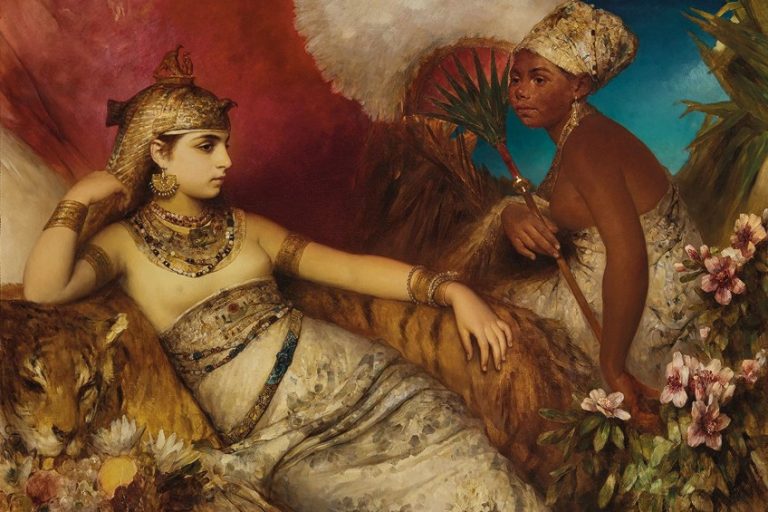
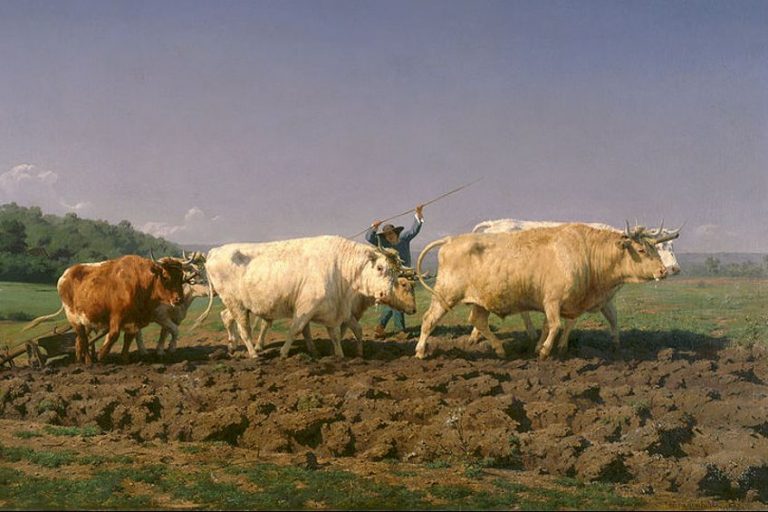
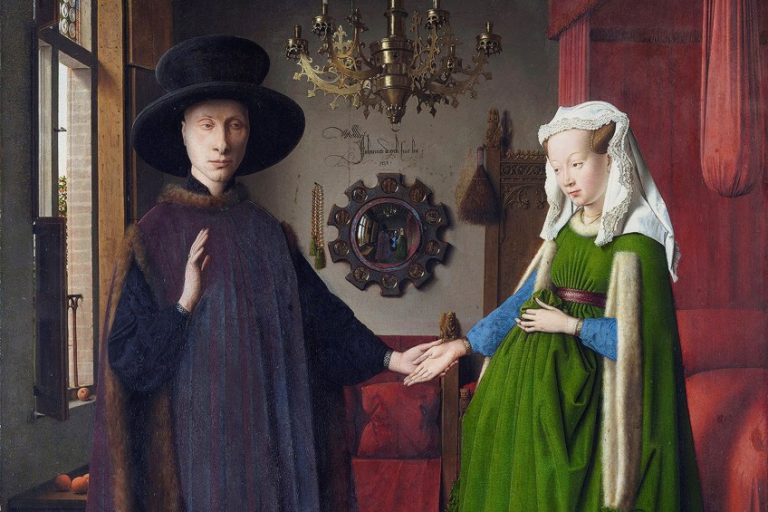

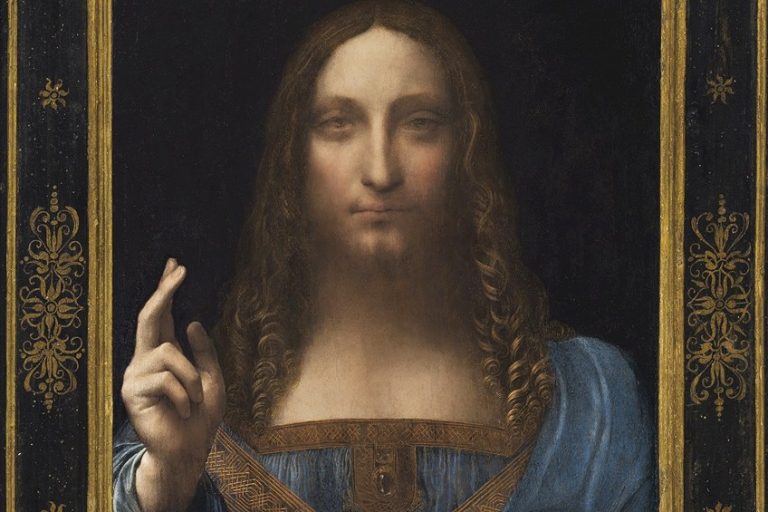



Thank you very much for sharing these article.
Thanks words are too small for the value you add through your content, This is the best guide I have seen so far on the internet. it was easy to understand with comprehensive and easy explanation.
Great work! So fascinating how the artists were entrusted with bringing to life the tenants of the Faith.